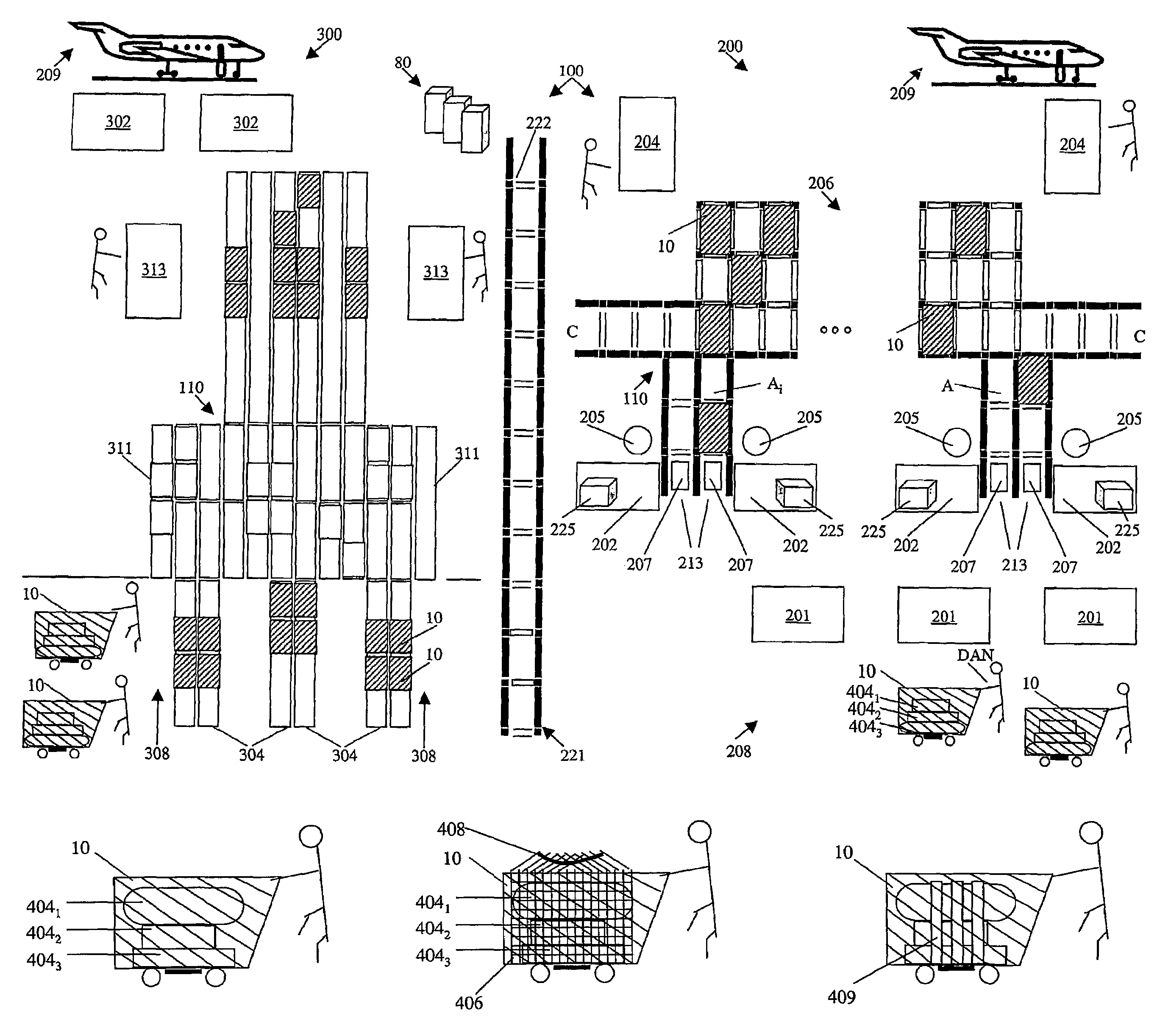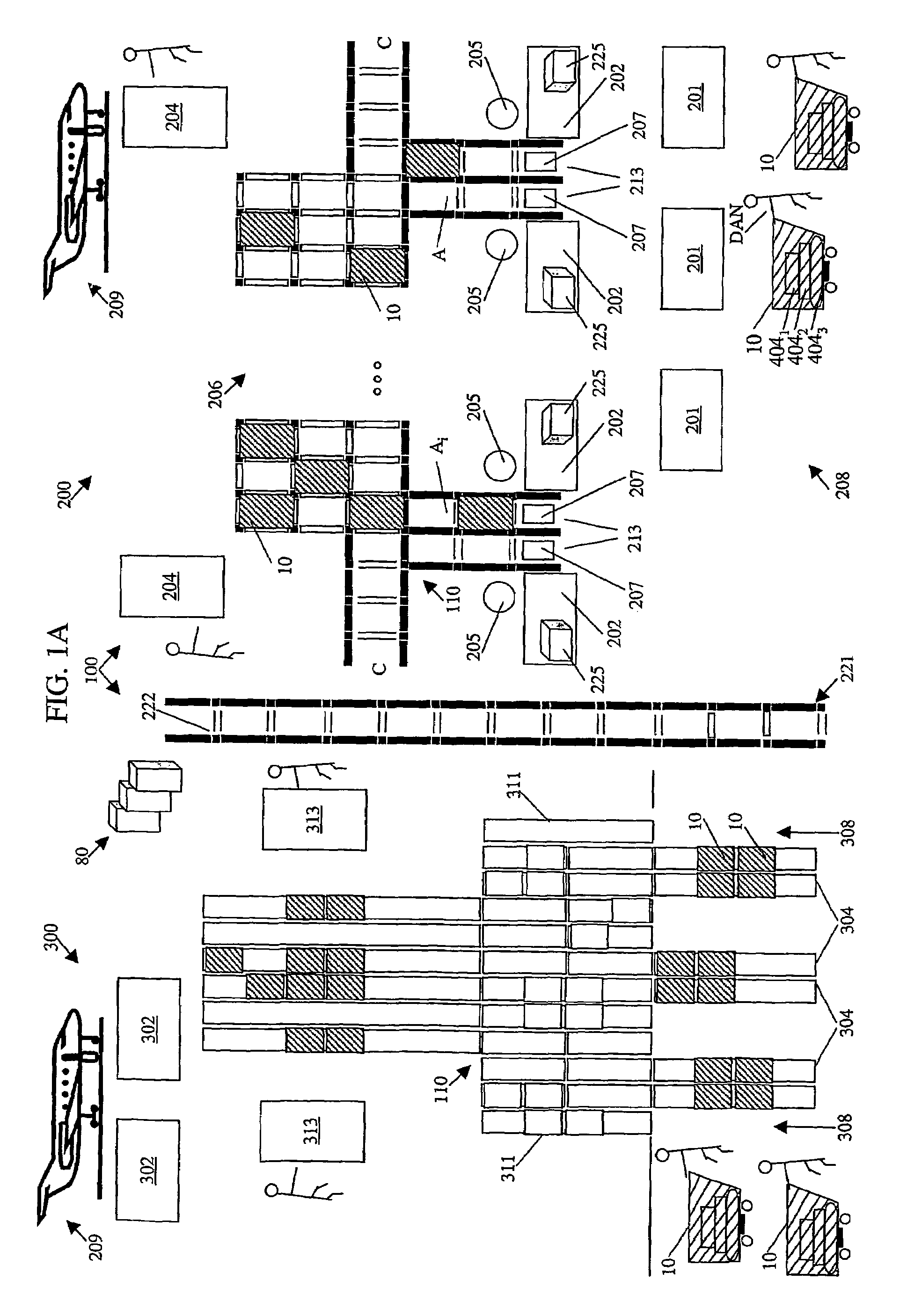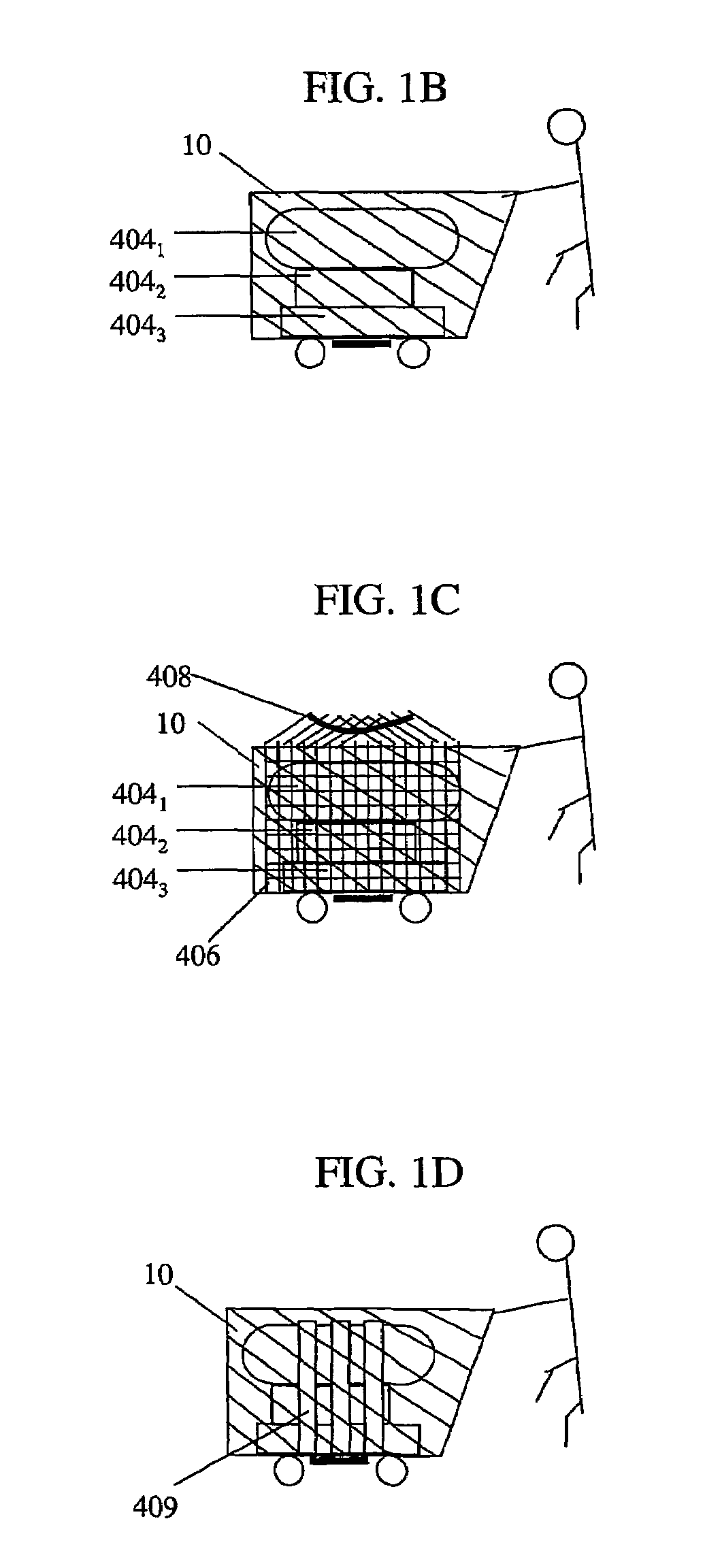Automated airport luggage system
a luggage system and automatic technology, applied in the direction of steering control, braking system, non-vehicle mounted steering control, etc., can solve the problems of interfering with each other's luggage, not being large enough for luggage, and difficult to find the car
- Summary
- Abstract
- Description
- Claims
- Application Information
AI Technical Summary
Benefits of technology
Problems solved by technology
Method used
Image
Examples
first embodiment
[0354]Reference is now made to FIGS. 16A-16C, which together schematically illustrate a track 600 of track system 110, for moving wagons 10 along it, in arrival area 300, in accordance with the present invention. In a sense, the movement of wagons along track system 110 is simpler on arrival than during departure, since on arrival, all pieces of luggage from plane 209 are to be moved to the same luggage pick-up area 304, and it appears that no sorting is necessary.
[0355]However, it is desirable that passenger Dan will receive his three pieces of luggage together, so that where wagons 10 are used, it is desirable that luggage 4041, 4042, and 4043 will all be on the same wagon 10, at arrival area 300. Where sacs 406 or straps 409 are used to form a single piece of luggage from 4041, 4042, and 4043, this requirement is already fulfilled by the use of sacs 406 or straps 409.
[0356]As seen in FIG. 16A, arrival area 300 includes airplane-unloading zone 302 at a distal end 602 of track 600....
second embodiment
[0392]Reference is now made to FIGS. 17A and 17B, which together schematically illustrate track system 610, and a system of trays 660, arranged for sorting pieces of luggage, by passenger, into wagons 10, in accordance with the present invention. In this way, passenger Dan will receive his three pieces of luggage, 4041, 4042, and 4043 together, on a single wagon 10, at the destination airport.
[0393]In jumbo planes, luggage is generally arranged in containers, wherein each container includes, on the average, 40 pieces of luggage. Thus, although several hundred passengers may have flown in airplane 209, the airplane in which passenger Dan flew, and although the number of pieces of luggage is generally 160% greater than the number of passengers, the luggage in each container belongs to only about 25 people. Preferably, the several pieces of luggage from a single wagon 10 are loaded onto a single container. Thus, the luggage in each container needs to be sorted only amongst about 25 wag...
third embodiment
[0410]Reference is now made to FIGS. 18A-18E, which together, schematically illustrate a tray means 700 for automatically sorting and loading luggage onto wagons 10, located in loading tracks 615 and 613, in accordance with the present invention.
[0411]As seen in FIG. 18A, tray 700 is boat-like in shape and includes a bow-like proximal end 674 and a stem-like distal end 672, wherein proximal and distal are described with respect to wagon 10. Tray 700 further includes a bottom side 676 and a top side 678. Additionally, tray 700 includes sides 680, a bottom 690, a back 689 at distal end 672, and a slanted swinging door 694, arranged on hinges 696, at proximal end 674.
[0412]Furthermore, tray 700 includes two slanted telescopic bars 692, parallel to slanted swinging door 694, at proximal end 674. Slanted telescopic bars 692 support a top 698 and are arranged for telescopically extending and contracting in length, by a driver 686, preferably located within one of slanted telescopic bars 6...
PUM
 Login to View More
Login to View More Abstract
Description
Claims
Application Information
 Login to View More
Login to View More - R&D
- Intellectual Property
- Life Sciences
- Materials
- Tech Scout
- Unparalleled Data Quality
- Higher Quality Content
- 60% Fewer Hallucinations
Browse by: Latest US Patents, China's latest patents, Technical Efficacy Thesaurus, Application Domain, Technology Topic, Popular Technical Reports.
© 2025 PatSnap. All rights reserved.Legal|Privacy policy|Modern Slavery Act Transparency Statement|Sitemap|About US| Contact US: help@patsnap.com



